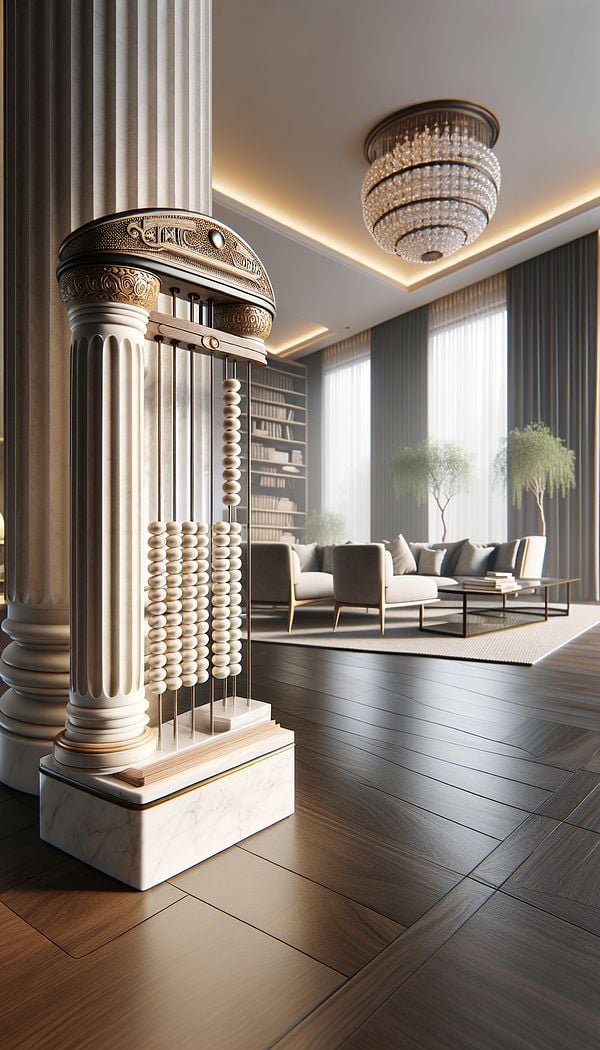What is an Abacus?
An abacus is a flat slab forming the top of a column capital.
Description
In the world of interior design, an abacus may not be the first element that comes to mind, but it plays a crucial role in the architectural elements that contribute to the overall aesthetics of a space. An abacus is essentially a flat, square or rectangular slab that sits at the very top of a column capital. Its primary function is structural, distributing the weight of the structure evenly across the column. However, its secondary role is decorative, serving to cap the column in a visually pleasing manner.
Traditionally, abacuses are found in classical architecture, especially in Greek and Roman designs. The shape and decoration of an abacus can vary widely depending on the architectural order—Doric, Ionic, or Corinthian—each offering a distinct aesthetic. In more modern contexts, designers might reference the form and function of an abacus in creating contemporary pieces that nod to classical architecture, integrating these historical elements into modern or eclectic interior designs.
The importance of an abacus extends beyond its structural role. In the context of interior design, it serves as a bridge between the practical and aesthetic, melding functionality with form. By understanding and incorporating elements like the abacus, designers can create spaces that honor historical architectural principles while catering to contemporary styles and needs.
Usage
Abacuses are primarily used in the context of architectural and interior design involving columns. They can be seen in public buildings, monuments, traditional homes, and places of worship where classical styles are prevalent. Modern adaptations can be found in contemporary offices and homes, where designers use abacus-inspired elements for decorative purposes or as homage to classical design.
FAQs
-
How does an abacus contribute to interior design?
An abacus contributes to interior design by providing a structural and decorative cap to columns, bridging classical architectural principles with modern design when used creatively.
-
Can an abacus be used in modern design?
Yes, an abacus can be used in modern design. Designers often reference or reinterpret the abacus to integrate classical elements into contemporary or eclectic spaces.
-
What is the difference between the abacuses in Doric, Ionic, and Corinthian orders?
The difference lies primarily in their design; Doric abacuses are simple and plain, Ionic abacuses are characterized by a scrolled volute, and Corinthian abacuses are ornate, reflecting the elaborate capitals of their respective orders.
Practical Application
When incorporating an abacus into your design, consider the historical and architectural significance of the element. Use it as a decorative feature on columns or as inspiration in furniture design to add a touch of classical charm to your space. It’s also an opportunity to blend traditional and modern elements, creating a unique interior that bridges different styles.
-
Building Trade ProfessionalA building trade professional is an expert skilled in the construction, renovation, or repair of buildings.
-
Trestle TableA trestle table is a table consisting of a flat top supported by two or three trestle supports.
-
OnlayAn ornamental design applied to the surface of objects.
-
MoldingMolding is the use of decorative strips to enhance architectural features and spaces.
-
PelmetA pelmet is a framework placed above a window, used to conceal curtain fixtures.
